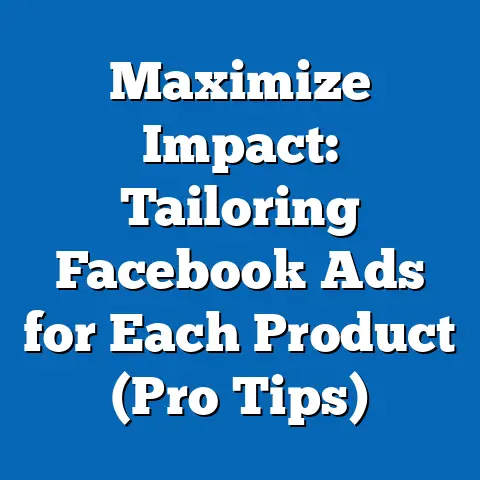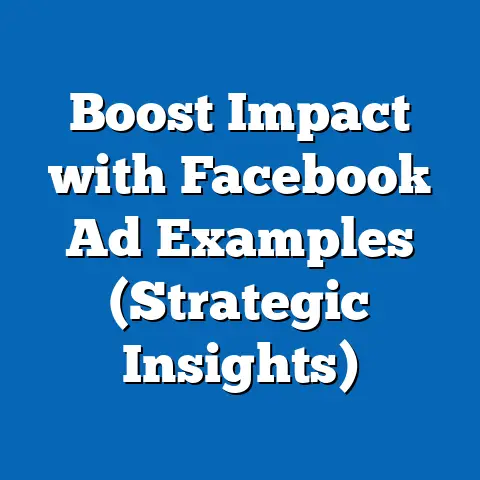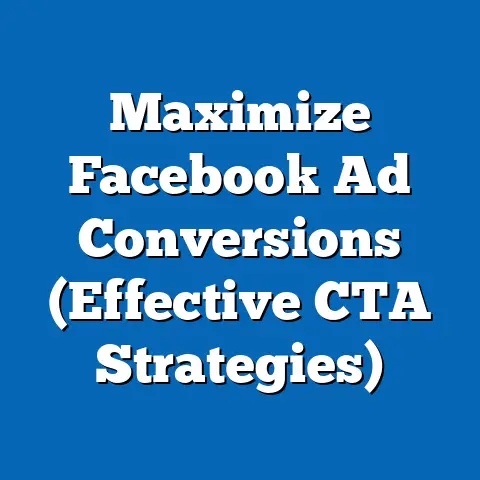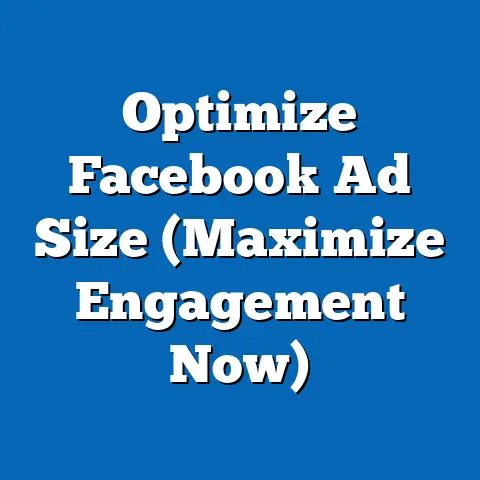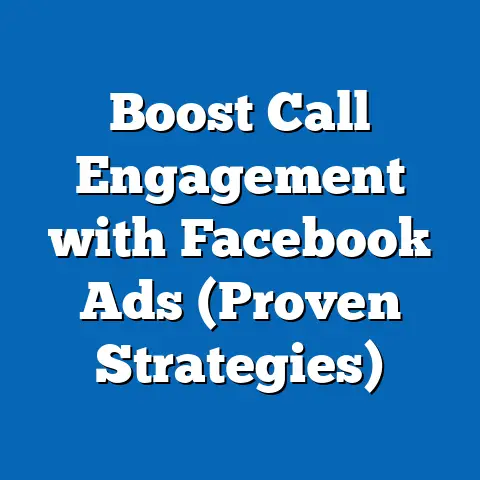Targeting Mastery: Boost Facebook Ads (Proven Strategies)
How much time and money have you wasted on Facebook ads that didn’t reach the right audience? I know that sting all too well. In my early days of running Facebook ads, I felt like I was throwing money into a black hole, hoping something would stick. The ads were beautifully designed, the copy was compelling (or so I thought!), but the results were consistently underwhelming. The problem? My targeting was off.
Facebook advertising, when done right, can be an incredibly powerful tool for reaching your ideal customers. But the keyword here is right. And “right” starts with mastering the art of targeting. Forget the spray-and-pray approach; successful Facebook ads hinge on pinpoint accuracy.
Section 1: Understanding Facebook’s Targeting Capabilities
Facebook offers a dizzying array of targeting options, which can be overwhelming at first. But understanding these options is the first step toward creating effective campaigns. Think of it as having a toolbox full of specialized tools – you need to know what each tool does to use it effectively.
Here’s a breakdown of the fundamental targeting options available:
-
Demographics: This is your basic foundation. We’re talking about age, gender, location (down to the zip code!), education level, relationship status, language, and even life events like getting a new job or recently moving. This is great for broad strokes, but often not enough on its own.
- Example: If you’re selling baby products, targeting parents within a specific age range and location is a logical starting point.
-
Interests: This is where things get more interesting. Facebook tracks users’ interests based on the pages they like, the content they engage with, the topics they discuss, and even the apps they use. Think hobbies, favorite activities, entertainment, and specific brands they follow.
- Example: Someone interested in hiking might like pages related to hiking trails, outdoor gear, or national parks. You can target these individuals with ads for hiking boots or camping equipment.
-
Behaviors: This is arguably the most powerful targeting option. Facebook tracks user behaviors based on their purchase history, device usage (e.g., are they primarily mobile users?), travel habits, and even their online activities. This allows you to target people who are likely to be interested in your product or service based on their past actions.
- Example: You could target people who have recently made online purchases of similar products to yours, or those who frequently travel to specific destinations.
Demographics: This is your basic foundation. We’re talking about age, gender, location (down to the zip code!), education level, relationship status, language, and even life events like getting a new job or recently moving. This is great for broad strokes, but often not enough on its own.
- Example: If you’re selling baby products, targeting parents within a specific age range and location is a logical starting point.
Interests: This is where things get more interesting. Facebook tracks users’ interests based on the pages they like, the content they engage with, the topics they discuss, and even the apps they use. Think hobbies, favorite activities, entertainment, and specific brands they follow.
- Example: Someone interested in hiking might like pages related to hiking trails, outdoor gear, or national parks. You can target these individuals with ads for hiking boots or camping equipment.
Behaviors: This is arguably the most powerful targeting option. Facebook tracks user behaviors based on their purchase history, device usage (e.g., are they primarily mobile users?), travel habits, and even their online activities. This allows you to target people who are likely to be interested in your product or service based on their past actions.
- Example: You could target people who have recently made online purchases of similar products to yours, or those who frequently travel to specific destinations.
The Significance of the Facebook Pixel
The Facebook Pixel is a small snippet of code that you place on your website. It’s a game-changer for audience targeting because it allows you to track the actions that people take on your website after clicking on your Facebook ad. This data is invaluable for optimizing your campaigns and creating highly targeted audiences.
Think of the Pixel as your own personal data detective, constantly gathering information about your website visitors. It tracks things like:
- Page Views: Which pages are people visiting?
- Add to Cart: Are people adding products to their cart?
- Purchases: Are they completing the purchase?
- Lead Submissions: Are they filling out your lead form?
This data allows you to create custom audiences of people who have taken specific actions on your website, enabling you to retarget them with highly relevant ads.
Custom Audiences and Lookalike Audiences
These are two of the most powerful targeting tools in your arsenal.
-
Custom Audiences: These are audiences that you create based on your own data. This could be your email list, website visitors (tracked by the Pixel), app users, or even people who have interacted with your Facebook page or Instagram profile.
- Example: You can upload your email list to Facebook and create a custom audience of your existing customers. You can then target these customers with special offers or new product announcements.
-
Lookalike Audiences: This is where the magic really happens. Lookalike Audiences allow you to find new people who are similar to your best customers. You start by creating a custom audience (e.g., your existing customers), and then Facebook uses its algorithm to find people who share similar demographics, interests, and behaviors.
- Example: If you have a custom audience of your top-spending customers, you can create a lookalike audience of people who are likely to be just as valuable to your business.
Custom Audiences: These are audiences that you create based on your own data. This could be your email list, website visitors (tracked by the Pixel), app users, or even people who have interacted with your Facebook page or Instagram profile.
- Example: You can upload your email list to Facebook and create a custom audience of your existing customers. You can then target these customers with special offers or new product announcements.
Lookalike Audiences: This is where the magic really happens. Lookalike Audiences allow you to find new people who are similar to your best customers. You start by creating a custom audience (e.g., your existing customers), and then Facebook uses its algorithm to find people who share similar demographics, interests, and behaviors.
- Example: If you have a custom audience of your top-spending customers, you can create a lookalike audience of people who are likely to be just as valuable to your business.
Key Takeaway: Mastering Facebook’s basic targeting options, understanding the power of the Pixel, and leveraging Custom and Lookalike Audiences are essential for creating effective ad campaigns. Don’t just guess; use data to drive your targeting decisions.
Next Steps: Take some time to explore the different targeting options in Facebook Ads Manager. Install the Facebook Pixel on your website and start collecting data. Begin brainstorming potential Custom and Lookalike Audiences that you could create.
Section 2: Crafting Your Ideal Customer Profile
Targeting is about more than just selecting a few demographics and interests. It’s about truly understanding your ideal customer. Think of it like this: you wouldn’t try to sell a steak to a vegetarian, right? You need to know who you’re selling to and what motivates them. This is where creating a detailed customer profile, or customer persona, comes in.
What is a Customer Persona?
A customer persona is a semi-fictional representation of your ideal customer, based on research and data about your existing and potential customers. It’s a detailed profile that includes demographics, interests, behaviors, motivations, goals, and pain points.
Think of it as giving your ideal customer a name, a face, and a story.
Why is a Customer Persona Important for Targeting?
A well-defined customer persona helps you:
- Focus your targeting efforts: Instead of targeting everyone, you can focus on reaching the people who are most likely to be interested in your product or service.
- Craft more compelling ad copy: When you understand your target audience’s pain points and desires, you can write ad copy that resonates with them on a deeper level.
- Choose the right ad formats: Different ad formats appeal to different audiences. Knowing your target audience’s preferences can help you choose the most effective ad format.
- Improve your overall ROI: By targeting the right people with the right message, you can increase your conversion rates and improve your overall return on investment.
Step-by-Step Guide to Creating a Detailed Customer Profile
-
Gather Data from Existing Customers: This is your goldmine. Start by analyzing your existing customer data. Look at demographics, purchase history, website behavior, and customer service interactions.
- Pro Tip: Conduct customer surveys and interviews to get even more in-depth insights. Ask them about their motivations, goals, and pain points.
-
Analyze Competitors’ Audiences: Take a look at your competitors’ Facebook pages and ads. Who are they targeting? What kind of content are they posting? What kind of engagement are they getting? This can give you valuable clues about your own target audience.
- Tool Recommendation: Use Facebook’s Page Transparency tool to see the ads that your competitors are running.
-
Utilize Analytics Tools to Identify Trends: Use tools like Google Analytics and Facebook Analytics to track website traffic, user behavior, and ad performance. Look for trends and patterns that can help you understand your target audience better.
- Example: You might discover that a significant portion of your website traffic comes from mobile devices, which would suggest that you should optimize your ads for mobile viewing.
-
Bring Your Persona to Life: Once you’ve gathered all of your data, it’s time to create your customer persona. Give them a name, a picture, and a detailed backstory. Include information about their demographics, interests, behaviors, motivations, goals, and pain points.
- Example: Meet “Sarah,” a 35-year-old marketing manager who loves hiking and traveling. She’s looking for high-quality outdoor gear that’s both durable and stylish. Her biggest pain point is finding gear that’s both functional and affordable.
Gather Data from Existing Customers: This is your goldmine. Start by analyzing your existing customer data. Look at demographics, purchase history, website behavior, and customer service interactions.
- Pro Tip: Conduct customer surveys and interviews to get even more in-depth insights. Ask them about their motivations, goals, and pain points.
Analyze Competitors’ Audiences: Take a look at your competitors’ Facebook pages and ads. Who are they targeting? What kind of content are they posting? What kind of engagement are they getting? This can give you valuable clues about your own target audience.
- Tool Recommendation: Use Facebook’s Page Transparency tool to see the ads that your competitors are running.
Utilize Analytics Tools to Identify Trends: Use tools like Google Analytics and Facebook Analytics to track website traffic, user behavior, and ad performance. Look for trends and patterns that can help you understand your target audience better.
- Example: You might discover that a significant portion of your website traffic comes from mobile devices, which would suggest that you should optimize your ads for mobile viewing.
Bring Your Persona to Life: Once you’ve gathered all of your data, it’s time to create your customer persona. Give them a name, a picture, and a detailed backstory. Include information about their demographics, interests, behaviors, motivations, goals, and pain points.
- Example: Meet “Sarah,” a 35-year-old marketing manager who loves hiking and traveling. She’s looking for high-quality outdoor gear that’s both durable and stylish. Her biggest pain point is finding gear that’s both functional and affordable.
The Importance of Empathy
Creating a customer persona is not just about gathering data; it’s also about developing empathy for your target audience. Put yourself in their shoes and try to understand their perspective. What are their biggest challenges? What are their biggest dreams?
When you understand your target audience on a deeper level, you can create ads that truly resonate with them.
Key Takeaway: Crafting a detailed customer persona is essential for effective Facebook ad targeting. Don’t just rely on demographics and interests; dig deeper and understand your ideal customer’s motivations, goals, and pain points.
Next Steps: Start gathering data from your existing customers. Analyze your competitors’ audiences. Utilize analytics tools to identify trends. Create a detailed customer persona that brings your ideal customer to life.
Section 3: Advanced Targeting Strategies
Now that you have a solid understanding of Facebook’s basic targeting options and the importance of creating a customer persona, it’s time to dive into some advanced targeting strategies. These strategies will help you refine your audience targeting, reach the right people with the right message, and ultimately improve your ad performance.
Layering Targeting Options for Hyper-Specific Audiences
This is where you combine multiple targeting options to create a highly specific audience. Think of it like building a custom-made suit – you’re tailoring your audience to fit your exact needs.
- Example: Let’s say you’re selling organic baby food. You could layer targeting options by targeting parents (demographic) who are interested in organic food (interest) and have recently made online purchases of baby products (behavior). This would create a highly specific audience of people who are likely to be interested in your product.
Using Exclusions to Filter Out Irrelevant Audiences
Exclusions are just as important as inclusions. They allow you to filter out people who are not likely to be interested in your product or service. This can help you save money and improve your ad performance.
- Example: If you’re selling high-end luxury watches, you might want to exclude people who are interested in budget watches or who have a low income.
Implementing Behavioral Targeting for High-Conversion Rates
As I mentioned before, behavioral targeting is one of the most powerful targeting options available. It allows you to target people based on their past actions, which can be a strong indicator of their future behavior.
- Example: You could target people who have recently visited your website, added products to their cart, or made a purchase. You can also target people who have interacted with your Facebook page or Instagram profile.
Leveraging Facebook’s Audience Insights Tool
This is a free tool that Facebook provides to help you learn more about your target audience. It gives you insights into their demographics, interests, behaviors, and even their purchase history.
- How to use it: Go to Facebook Ads Manager and click on “Audience Insights.” You can then select a custom audience, a saved audience, or a general audience based on demographics, interests, and behaviors.
Case Studies: Brands That Nailed Advanced Targeting
- Dollar Shave Club: They famously used humor and relatable messaging to target men who were tired of overpriced razor blades. They targeted men who were interested in grooming, shaving, and humor, and they used ad copy that spoke directly to their pain points.
- Airbnb: They use dynamic product ads to retarget people who have viewed specific properties on their website. They also use lookalike audiences to find new people who are similar to their existing customers.
Key Takeaway: Advanced targeting strategies can help you refine your audience targeting, reach the right people with the right message, and ultimately improve your ad performance. Don’t be afraid to experiment with different layering options, exclusions, and behavioral targeting techniques.
Next Steps: Start experimenting with layering targeting options and exclusions in your Facebook ad campaigns. Explore Facebook’s Audience Insights tool to learn more about your target audience. Research case studies of brands that have successfully used advanced targeting strategies.
Section 4: Retargeting and Remarketing Techniques
Imagine someone walks into your store, browses around, maybe even picks up a few items, but then leaves without buying anything. Wouldn’t you want a chance to bring them back and close the sale? That’s essentially what retargeting does in the online world.
What is Retargeting?
Retargeting (also known as remarketing) is a strategy that allows you to show ads to people who have previously interacted with your website, app, or social media profiles. It’s a powerful way to re-engage potential customers who have already shown interest in your product or service.
Why is Retargeting Important?
- Increases Brand Awareness: Retargeting keeps your brand top-of-mind for potential customers who have already shown interest.
- Improves Conversion Rates: Retargeting reminds potential customers about your product or service and encourages them to take action.
- Drives Sales: By showing relevant ads to people who have already visited your website or app, you can significantly increase your sales.
- Personalizes the Customer Experience: Retargeting allows you to show ads that are tailored to the specific actions that people have taken on your website or app.
Types of Retargeting Ads
-
Website Retargeting: This is the most common type of retargeting. It involves showing ads to people who have visited your website. You can target people who have visited specific pages, added products to their cart, or made a purchase.
- Example: If someone visits your product page but doesn’t add the product to their cart, you can show them an ad that reminds them about the product and encourages them to complete the purchase.
-
Dynamic Ads for Products Viewed: These are ads that automatically show the products that people have viewed on your website. They’re a great way to remind potential customers about the specific products that they were interested in.
- Example: If someone views a pair of shoes on your website, you can show them a dynamic ad that features those shoes.
-
Sequential Retargeting: This is a more advanced retargeting technique that involves showing people a series of ads over time, each designed to guide them further down the sales funnel.
- Example: You could start by showing people an ad that introduces your brand, then show them an ad that highlights the benefits of your product, and finally show them an ad that offers a special discount.
Website Retargeting: This is the most common type of retargeting. It involves showing ads to people who have visited your website. You can target people who have visited specific pages, added products to their cart, or made a purchase.
- Example: If someone visits your product page but doesn’t add the product to their cart, you can show them an ad that reminds them about the product and encourages them to complete the purchase.
Dynamic Ads for Products Viewed: These are ads that automatically show the products that people have viewed on your website. They’re a great way to remind potential customers about the specific products that they were interested in.
- Example: If someone views a pair of shoes on your website, you can show them a dynamic ad that features those shoes.
Sequential Retargeting: This is a more advanced retargeting technique that involves showing people a series of ads over time, each designed to guide them further down the sales funnel.
- Example: You could start by showing people an ad that introduces your brand, then show them an ad that highlights the benefits of your product, and finally show them an ad that offers a special discount.
Tips for Setting Up Effective Retargeting Campaigns
- Segment Your Audiences: Don’t just retarget everyone who has visited your website. Segment your audiences based on their behavior and show them ads that are relevant to their specific interests.
- Set Time Frames: Don’t retarget people forever. Set time frames for your retargeting campaigns so that you’re not wasting money on people who are no longer interested in your product or service.
- Use Compelling Ad Copy: Your retargeting ads should be just as compelling as your initial ads. Use clear and concise language that highlights the benefits of your product or service.
- Offer Incentives: Consider offering a special discount or promotion to encourage people to take action.
Key Takeaway: Retargeting is a powerful strategy for re-engaging potential customers and driving sales. Segment your audiences, set time frames, use compelling ad copy, and offer incentives to maximize your results.
Next Steps: Set up retargeting campaigns for your website, app, or social media profiles. Segment your audiences based on their behavior. Experiment with different ad copy and incentives.
Section 5: Testing and Optimizing Your Targeting Strategies
Targeting isn’t a “set it and forget it” kind of thing. It’s an ongoing process of testing, analyzing, and optimizing. Think of it like tuning a musical instrument – you need to constantly adjust the settings to get the best sound. In this case, the “sound” is your ad performance.
The Importance of A/B Testing
A/B testing (also known as split testing) is a method of comparing two versions of an ad (or any marketing element) to see which one performs better. It’s an essential tool for optimizing your targeting strategies.
- How it works: You create two versions of an ad that are identical except for one variable (e.g., the targeting option). You then run the ads simultaneously and track which one gets better results.
What to Test
- Define Your Goal: What are you trying to achieve with your A/B test? Are you trying to increase click-through rates, conversion rates, or sales?
- Choose Your Variable: What targeting option are you going to test? Make sure you only test one variable at a time so that you can accurately measure the impact of each change.
- Create Your Ads: Create two versions of your ad that are identical except for the variable you’re testing.
- Set Your Budget and Schedule: Set a budget and schedule for your A/B test. Make sure you run the test long enough to gather statistically significant data.
- Analyze Your Results: Once the test is complete, analyze the results to see which version of the ad performed better. Use this data to inform your future targeting decisions.
Analyzing Results and Making Data-Driven Decisions
- Track Your Key Metrics: Track your key metrics, such as click-through rates, conversion rates, and cost per acquisition.
- Use Statistical Significance: Make sure your results are statistically significant before drawing any conclusions.
- Don’t Be Afraid to Iterate: If your A/B test doesn’t produce the results you were hoping for, don’t give up. Iterate on your targeting strategies and try again.
Key Takeaway: Testing and optimizing your targeting strategies is an ongoing process. Use A/B testing to compare different targeting options and make data-driven decisions.
Next Steps: Start A/B testing your Facebook ad campaigns. Test different demographics, interests, behaviors, and audience sizes. Analyze your results and iterate on your targeting strategies.
Section 6: Staying Ahead of Facebook’s Algorithm Changes
Facebook’s algorithm is constantly evolving. What worked yesterday might not work today. It’s like trying to hit a moving target. Staying ahead of these changes is crucial for maintaining effective targeting strategies.
How Facebook’s Algorithm Updates Impact Targeting Strategies
- Changes to Interest Targeting: Facebook has been known to remove or consolidate interest targeting options, which can impact your ability to reach specific audiences.
- Increased Emphasis on Relevance: Facebook is placing a greater emphasis on ad relevance, which means that your ads need to be highly relevant to your target audience in order to perform well.
- Privacy Updates: Changes to privacy policies can limit the amount of data that you can collect about your target audience, which can make it more difficult to target them effectively.
How to Stay Informed About Changes
- Follow Facebook’s Official Blog: This is the best place to get updates about algorithm changes and new features.
- Join Industry Forums and Communities: Stay connected with other marketers and share insights about the latest trends and best practices.
- Experiment and Test: The best way to stay ahead of algorithm changes is to experiment and test different targeting strategies.
Building a Flexible Strategy That Can Evolve
- Focus on Core Principles: Focus on the core principles of effective targeting, such as understanding your target audience and creating relevant ads.
- Be Adaptable: Be prepared to adapt your targeting strategies as Facebook’s algorithm changes.
- Don’t Rely on One Strategy: Don’t put all your eggs in one basket. Diversify your targeting strategies so that you’re not relying on any one particular method.
Key Takeaway: Facebook’s algorithm is constantly evolving, so it’s important to stay informed about changes and adapt your targeting strategies accordingly.
Next Steps: Follow Facebook’s official blog. Join industry forums and communities. Experiment and test different targeting strategies.
Conclusion
Mastering targeting for Facebook ads is not a one-time task but an ongoing process that requires attention and adaptation. We’ve covered a lot in this guide, from understanding the basic targeting options to implementing advanced strategies and staying ahead of algorithm changes.
Remember, effective targeting is the foundation of successful Facebook advertising. By taking the time to understand your target audience, craft compelling ad copy, and test different targeting options, you can significantly improve your ad performance and drive better results for your business.
Now, it’s time to put these strategies into action. Start by creating a detailed customer persona. Then, experiment with layering targeting options, exclusions, and behavioral targeting techniques. Don’t forget to set up retargeting campaigns and A/B test your ads.
The journey to targeting mastery is a marathon, not a sprint. But with consistent effort and a willingness to learn, you can achieve your Facebook advertising goals and drive significant growth for your business. Now go out there and start targeting like a pro!

